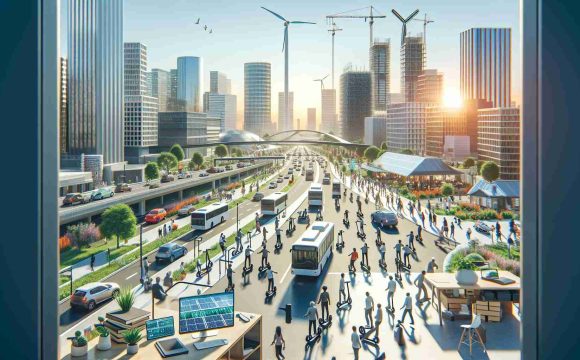A historic shift is taking place at the Vatican. Pope Francis has unveiled an ambitious plan to transform the Vatican into a model of sustainability, focusing on renewable energy sources. This initiative came to light with the installation of a new solar panel roof at the Vatican Museums, a significant step toward the Pope’s vision of a greener future.
The photovoltaic panels, installed by the Italian energy company ACEA, will generate renewable energy to meet the museum’s power requirements. Over the span of just six months, this integration of solar technology was achieved in a densely built area—a feat highlighted by ACEA’s president, who emphasized the challenge of fitting such systems within existing infrastructure.
In June, the Pope’s ‘Brother Sun’ letter laid the groundwork for this initiative. He proposed installing additional solar panels on Vatican property outside the city, projecting that these installations could fulfill all of Vatican City’s energy needs. This move aligns with his broader call for sustainable development and reduced greenhouse gas emissions.
The Vatican’s commitment to sustainability has deep roots, dating back to the Pope’s 2015 encyclical, which urged a proactive approach to climate change. In 2022, the Vatican formalized its dedication by joining the United Nations Climate Change framework, aiming to be one of the few nations to generate all its electricity from renewable sources. As the Vatican steps into this green era, it sets a powerful example for the global community.
Vatican’s Green Revolution: How Pope Francis is Leading the Charge for Sustainability
The Vatican’s Commitment to Sustainability
A historic and transformative approach to sustainability is gaining momentum at the Vatican, spearheaded by Pope Francis. This initiative highlights renewable energy as a central pillar in the Vatican’s mission to combat climate change and promote environmental stewardship.
The Solar Panel Installation
The recent installation of a solar panel roof at the Vatican Museums marks a pivotal step in this green transformation. The photovoltaic panels, successfully integrated by the Italian energy company ACEA, are designed to meet the energy demands of the museums, encouraging other institutions to follow suit in their sustainability efforts. The project, completed in an urban setting with limited space, underscores the potential for renewable energy even in densely built environments.
Broader Plans for Renewable Energy
In line with the Pope’s vision, additional solar panels are planned to be installed on Vatican property located outside the city. These developments aim to empower the Vatican to achieve self-sufficiency in energy, potentially enabling it to meet all its electricity needs through renewable sources. This goal resonates with Pope Francis’s long-standing commitment to reducing greenhouse gas emissions and fostering sustainable development practices.
Historical Context and Continued Efforts
The Vatican’s sustainability efforts are not new; they can be traced back to Pope Francis’s 2015 encyclical, “Laudato Si’,” which addressed the urgent need for action against climate change. The Vatican solidified its environmental ambitions in 2022 by joining the United Nations Climate Change framework, signaling a serious commitment to achieving renewable energy goals.
Insights and Predictions for the Future
As the Vatican transitions into this “green era,” it sets an example for nations worldwide, showcasing the feasibility of renewable energy initiatives even in historic and densely populated areas. This movement is expected to inspire similar actions across Europe and the globe, potentially influencing policy changes regarding energy use in both public and private sectors.
Pros and Cons of the Vatican’s Sustainability Initiative
Pros:
– Promotes renewable energy usage and reduces reliance on fossil fuels.
– Sets a powerful example for other nations and institutions.
– Aligns with global climate goals and the UN climate framework.
Cons:
– Implementation in densely populated areas can be challenging.
– Initial costs associated with renewable installations can be significant.
Conclusion
Pope Francis’s ambitious sustainability initiatives not only seek to transform the Vatican but also aim to galvanize the global community toward combating climate change through practical and innovative solutions. As these projects unfold, they will provide valuable insights into the viability and impact of renewable energy systems in urban settings.
For more information on sustainability efforts and updates on Vatican initiatives, visit Vatican News.







